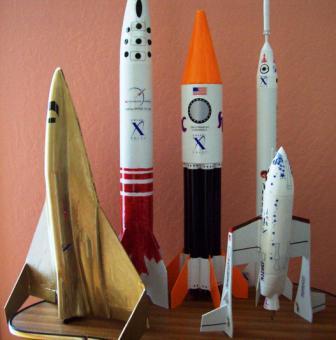

Printable PDF version
Subscribe to our newsletter
Fly Me to the Moon
Cost Estimating & Cost Management
Escalation Trends
Embassies
Construction
Management Specialists
111 Pine Street, Suite 1315
San Francisco, CA 94111
(415) 981-9430
www.TBDconsultants.com
Fly Me to the Moon
Geoff
Canham
It may be a while before you can book a trip to the moon, but space tourism is about to take off, or should we say ‘lift off’. Currently space tourism can take the form of a near space experience in a two-seater MiG fighter jet (flying to an altitude of about 13 miles), a zero-G experience in the so-called “vomit-comet” (as Stephen Hawking did recently), or if you have made your fortune creating something successful like Microsoft Word you might be able to afford a seat on a Salyut spacecraft and enjoy a few weeks at the International Space Station as Charles Simonyi did (the 10-day trip costing over $20 million).
However, in only a few years Virgin Galactic will be operating suborbital flights that will be expensive, but not out of reach for a lot of people. Current plans are to start operations in 2009, with the fare being $200,000 initially, and it is expected that that price will attract a lot of potential astronauts who would love to get even a quick view of earth’s globe from space. Orbital flights will not be far behind. Robert Bigelow has already test-flown a prototype of the orbital hotel he is planning, and a number of companies are working on orbital craft that can rendezvous with such a facility. For instance, PlanetSpace in Ontario, Canada, are developing the suborbital Canadian Arrow craft, to be followed by the orbital craft known as Silver Dart.
Private enterprises are not just interested in the headline setting manned spacecraft market. The market for unmanned orbital satellites has existed for some time, with Sea Launch being the first in the market (the writer was involved in the Sea Launch Home Base facility at Long Beach, California). Others are now beginning to compete in this lucrative market, such as The Space Exploration Technologies Corporation (SpaceX) with their Falcon 1 rocket.

Richard Branson’s plans for Virgin Galactic flights include three days of training for the tourist astronauts before a flight, and others working on space tourism advocate similar sessions, so these developments will require new or upgraded launch and training facilities. These Spaceports are likely to a cross between an airport and a theme park, with hotels, flight-simulators and other rides and training facilities, along with the actual launch (and landing) area. Noise abatement will be a more serious problem than with current airports, although if plans for hypersonic aircraft (which almost count as spacecraft) do become a reality, then airports will have more problems with noise abatement too.
Apart from Sea Launch, the US’s first commercial spaceport is being developed (for a price tag of around $200 million) in the desert of New Mexico, where SpaceShipOne made its successful X-Prize flights a couple of years ago, but we can expect to see other spaceports being developed across the nation, and around the world (such as the planned Spaceport Singapore and Spaceport Sweden) as tourists start to reach for the stars.
[Geoff is our in-house LUNARtic – a member of LUNAR, the Livermore Unit of the National Association of Rocketry]
Cost Estimating & Cost Management
Niall Durkin
What is the difference between cost estimating and cost management? How are they carried out, and what are they used for? Should you care? Niall addresses these issues in this article.
The TBD Bid Index is showing bid prices having risen in the Bay Area by over 50% in the past few years, with annual rates of escalation up to or exceeding 15%. Is this kind of thing unprecedented? Can we learn anything from the history of escalation? In this article we look back over the decades and see if we can get any idea of how escalation of construction costs will progress.
Embassies serve very special needs, and have their own special needs. In this article we look at this relatively rare but very necessary building type, and the special issues that have to be considered in the design, as well as what drives the cost of embassy construction.
Design consultant: Katie Levine of Vallance, Inc.